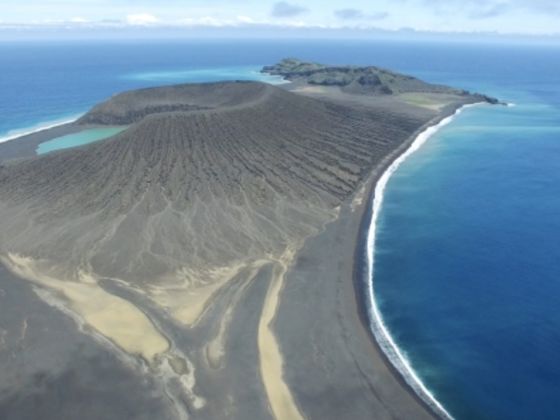It might not be Mars, but scientists have just discovered signs of life on this remote Pacific island, which was recently created by a volcanic eruption. Part of Tonga, and unofficially known as Hunga Tonga-Hunga Ha’apai, the new island is already home to flowering plants, sooty tern birds, and barn owls. The island was formed after a submarine volcano erupted in 2014, sending steam, ash, and rock into the air. After the ash settled, it mingled with seawater to solidify, thereby creating a new island mere months later.

Brand New Tonga Island Is Already Home to Gorgeous Flora and Owls
NASA researcher Dan Slayback visited the island in October, and discovered a mysterious light, sticky clay mud on the volcanic mass. In a NASA blog post, he wrote, “We didn’t really know what it was and I’m still a little baffled of where it’s coming from.” Although NASA predicts the island could last between six and 30 years, Slayback believes its time could be even shorter due to erosion. “Rain is having an impact on erosion,” he said, “so if there’s continued heavy rain there’s a real chance it might only be there for a decade or so. But it’s hard to say; if we’re lucky it might be there for longer.”
It’s not the first time an underwater volcanic eruption has created a new island, though these islands usually last less than a few months, and rarely host such vibrant flora and fauna. Volcanologist Jess Phoenix told the BBC, “In this case, the ash seemed to have a chemical reaction with the seawater that allowed it to solidify more than it usually would.” She isn’t, however, totally surprised to find animal and plant life on the island. “It’s likely that it was transported by animals [from surrounding islands],” she said, “most likely through bird droppings, and volcanic land is pretty fertile.”
H/T: BBC News